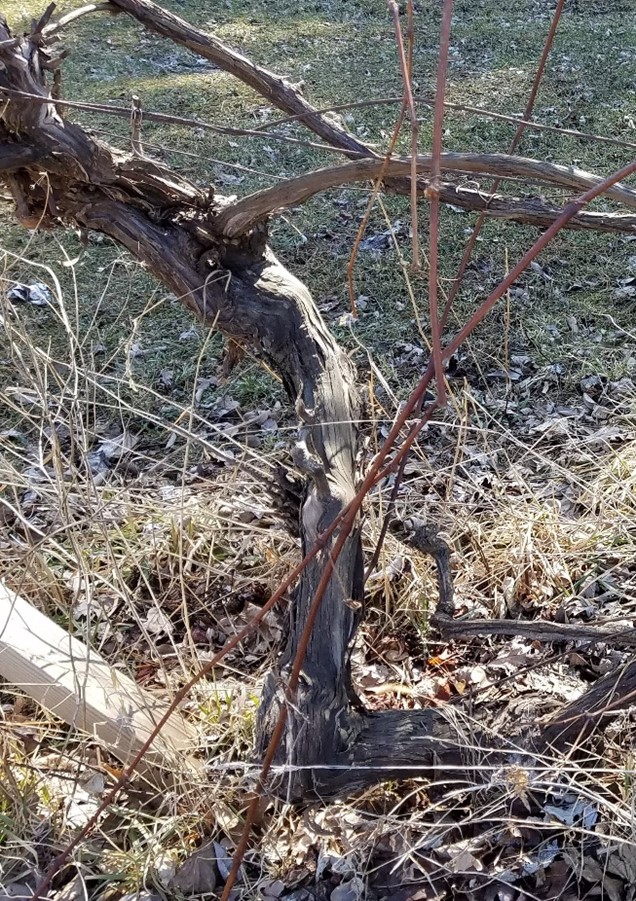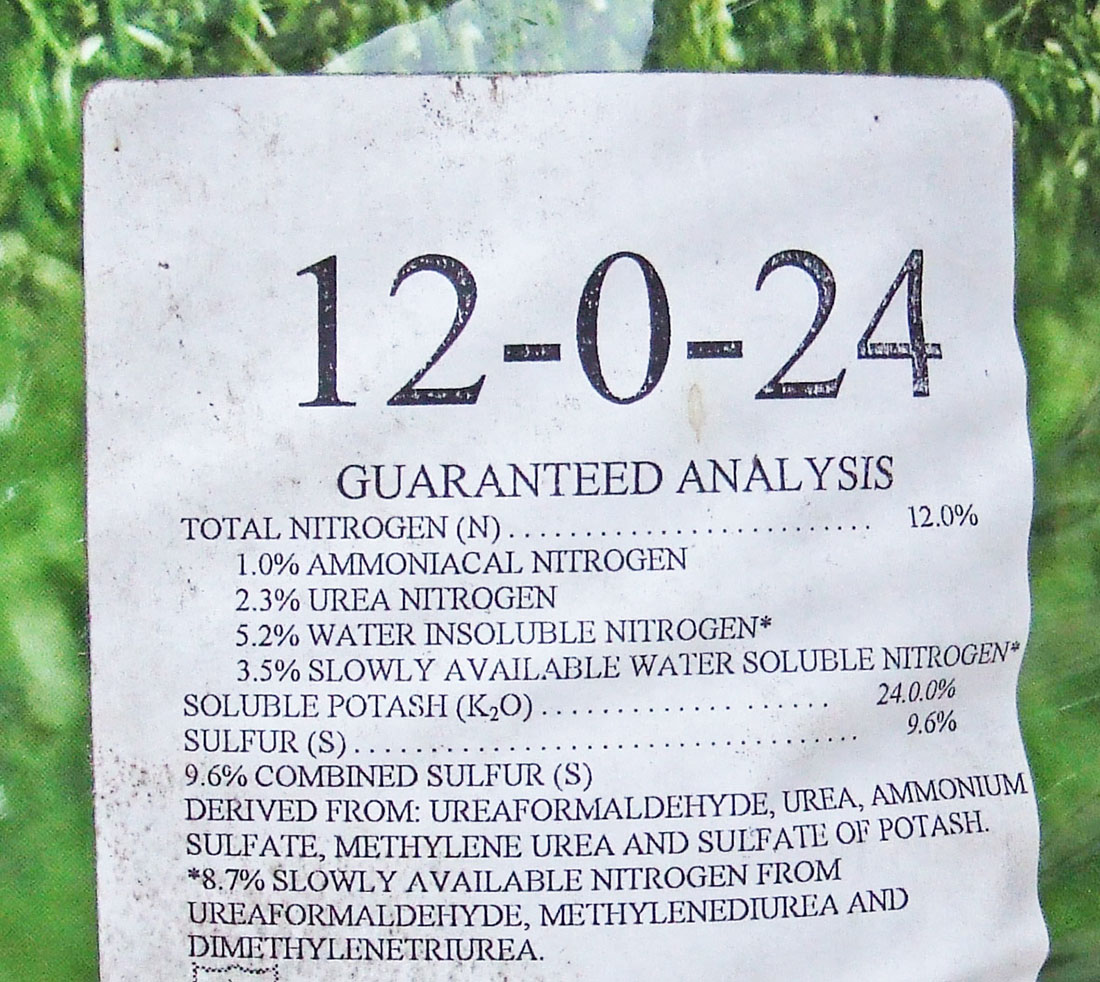Spring fertilization of garden fruits
High quality garden fruit production requires proper soil fertility.

Proper fertilization of tree and small fruits is essential for producing quality fruits. Before beginning a new fertilizer application regime in tree or small fruits, a gardener’s first priority is to test the soil to determine the nutrient needs of the crops. Michigan State University Extension offers a soil test kit that can be purchased online or at your local Extension office. The kit includes sampling instructions, and an analysis of existing nutrient levels and fertilizer recommendations is provided online.
Not all fruits are fertilized the same way. Fruit trees should be fertilized sometime between April and mid-May before bud break. Following the recommended rate and time of year for applications will provide the right balance of vegetative and fruit growth and will avoid late-summer growth that leads to winter injury. Small fruit fertilization methods vary by crop, and application does not always occur in spring. For all fruits, nitrogen (N) is often the most critical element for plant growth and development.
The following fertilization recommendations are for fruit trees and small fruit in residential gardens in their second and subsequent years of planting.
Stone fruits (peaches, plums and cherries)
These crops can be fertilized with 10-10-10 fertilizer at the rate of 1 pound per inch of trunk diameter or half a pound per year of age. No more than 5 pounds of fertilizer per inch should be applied in a single year. The total amount of fertilizer should be split between a mid-late April and late May fertilizer application (Photo 1).
Apples and pears
In Spring, trees should receive 0.05 pounds of Nitrogen for each year since planting with a maximum amount of 0.75 pounds for a mature tree. Semi-dwarf and dwarf rootstocks will require lower nutrient inputs. If your soil analysis shows deficiencies in other nutrients, you may need an alternate nutrient balance in the fertilizer. If trees have been extensively pruned, the fertilizer application rate should be reduced. For mature trees, the fertilizer applications can be split between two applications in the spring.
Raspberries and blackberries
At the beginning of raspberry bloom in the second year, apply half a pound of 10-10-10 or 12-12-12 for every 10 feet of row. In the third and subsequent years, increase the rate to 1 pound. Blackberries require a lower nitrogen rate of 3 ounces per 10 feet of row. Unlike tree fruits, raspberries and blackberries thrive better when fertilizer applications are divided into two separate applications over six to eight weeks.
After many years of using the above rate, phosphorous and potassium levels in the soil can build to the point that only annual nitrogen applications will be required. A soil test every three years will help to monitor the situation. If a well-established patch requires nitrogen only, apply and water in 1.3 to 1.5 pounds per 100-foot row of urea (46-0-0), or substitute dried blood meal 13-0-0 or corn gluten meal 10-0-0 using the same rate as 12-12-12 if an organic source is preferred.
Strawberries
Established strawberries should be fertilized once per year after the final harvest. Spring fertilization is not recommended because it can result in soft berries and overly vigorous growth that can increase the incidence of disease. Spread 8 ounces (one cup) 10-10-10 or 12-12-12 evenly over a 20-foot row.
If a soil test indicates a need for phosphorus or potassium, these nutrients may be applied in the spring without causing berry softening. Sometimes small amounts of nitrogen fertilizer may be beneficial for strawberries in the spring. If the plants are not growing vigorously, are light green or the plants are growing on sandy soils and there has been higher than normal rainfall, an application of nitrogen at the very low rate of 1.6 ounces (3 T) per 20-foot row should be helpful.
Blueberries
The fertilizer requirements for blueberries are different from other fruits, and soil pH must be taken into account. Blueberries grow best in soil with a pH between 4.5 and 5.0, and the pH of soil that is 6.0 or above must be adjusted prior to planting (see “Lowering Soil pH” from MSU Extension for more information).
Too much or the wrong kind of fertilizer can compromise plant health and reduce yields. Blueberries grow best when ammonium sulfate (AMS) is used for nitrogen and potassium sulfate is used as a source of potassium. These fertilizers will help to slowly lower the soil pH, which is helpful in most cases. The exception is when soil pH is already below 5.0, in which case urea is an appropriate form of nitrogen, because it will not lower soil pH. Blueberries fare worse when a nitrate form of nitrogen or potassium chloride is used. The label on the fertilizer bag will list the nutrients and what forms are used.
The total amount of fertilizer to apply each year per plant is:
- Years 2 – 3, 1 oz of AMS (or 0.4 oz urea)
- Years 4 – 5, 1.5 oz AMS (0.65 oz urea)
- Years 6 – 7, 2.5 oz AMS (1.0 oz urea)
- Years 8+, 3.3 oz AMS (1.5 oz urea)
Spread fertilizer in a loose ring out at least 6 inches from the plant, being careful not to get fertilizer on the plant. Blueberry roots are sensitive to salts, and excess or clumped areas of fertilizer will burn the roots. Apply any phosphorous or potassium recommended by a soil or foliar test at the same time.
Fertilizer should be applied after bud break. When possible, the plant will benefit from splitting the application of fertilizer, applying half at bud break and half after bloom. Monitor the plant growth and crop load, and adjust the rate slightly each year as needed. For example, if the plant grew vigorously but had low yields, the rate of nitrogen fertilizer applied the following spring should be reduced. Sandy soils will require slightly higher rates than heavy or organic soils.
Grapes
In grapes, there is a delicate balancing act between vine vigor and fruit production. Too much nitrogen will result in overly vigorous vines with less fruit—and increased risk of disease and winter injury. Depending on the available nutrients in the soil, grapevines may not need any fertilizer at all, but established grapevines generally benefit from maintenance levels of fertilizer, or an occasional top dressing of compost (see “Compost use in vineyards” by Fritz Westover, Texas AgriLife Extension, for more information).
A rule of thumb is to apply 8 ounces (1 cup) of 10-10-10 fertilizer per vine annually, beginning the second year. Spread the fertilizer evenly under the trellis below the grapevine canopy. But before you do, first examine vine growth. Individual canes that fruited the previous year should be between 0.25 and 0.375 inches in diameter (a bit thicker than a pencil), and about 4 to 6 feet long. If they are more vigorous, do not add any nitrogen—not even compost. Adjust the amount of nitrogen applied every year based on vine growth (Photo 2).

Apply fertilizer shortly after growth has started. If no phosphorous or potassium are required (based on soil or foliar tests), urea (46-0-0) may be used at 2 ounces per plant. Organic sources may be substituted for urea as long as you compensate for the lower amount of nitrogen in the organic sources. Marginal leaf scorching indicates a potassium deficiency and may be corrected at any time during the growing season through application of potassium fertilizer (no nitrogen).
How to apply fertilizer
Once the amount to be applied has been calculated, fertilizer should be placed in a wide band under the farthest branches from the trunk, or the drip line, of the tree or bush. Most of the roots that absorb water and nutrients are in this area. Instead of broadcasting (applying uniformly over an entire area), some people prefer to drill holes around the drip line using an auger for the fertilizer placement. This method is acceptable but more time consuming if there are many trees to fertilize.
Organic fertilizers are acceptable in fruit crops, although certain types of manure are not advisable to use due to nitrogen levels that are too high. After applying any fertilizer, it should be watered in within 24 hours by rain or irrigation. Avoid applying fertilizer in the fall since this can delay winter dormancy in many fruit crops.
Calculating how much fertilizer to apply from the bag
To calculate how much nitrogen is in your fertilizer, divide the amount of nitrogen necessary by the percentage in your fertilizer. For example, 3 ounces of nitrogen in a 12-12-12 would involve 3 ÷ 0.12 = 25 ounces of fertilizer. In short, 12% of the material in the bag of the previous scenario is nitrogen (Photo 3). In the absence of a soil test, a general recommendation would be to apply 1 cup of 12-12-12 per inch of tree trunk diameter. Never apply more than 8 cups of fertilizer to mature trees.

Fertilizer recommendations are often given at rates applicable to commercial growers. “Converting Fertilizer Rates from Tons to Teaspoons” from Louisiana State University AgCenter is useful for quick conversions of pounds per acre to a measurement that is more useful to the backyard gardener.
A smart gardener knows that proper fertilization based on soil test results will result in healthier and more productive plants while protecting Michigan’s water resources from pollution. Take the time to grow it right!



 Print
Print Email
Email